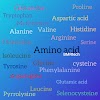Vitamin B₂ (Riboflavin)
Riboflavin, also known as vitamin B₂, is a vitamin found in food and used as a dietary supplement. It is required by the body for cellular respiration. Food sources include eggs, green vegetables, milk and other dairy product, meat, mushrooms, and almonds. Some countries require its addition to grains.
History
The first observation of a pigment in milk with yellow-green fluorescence can be traced to the English chemist Alexander Wynter Blyth in 1872, but it was not until the early 1930s that the substance was characterized as riboflavin.
Structure of Vitamin B2-
Roles of Vitamin B2-
Vitamin B2 helps break down proteins, fats, and carbohydrates. It plays a vital role in maintaining the body’s energy supply.
Riboflavin helps convert carbohydrates into adenosine triphosphate (ATP). The human body produces ATP from food, and ATP produces energy as the body requires it. The compound ATP is vital for storing energy in muscles.
Along with vitamin A, vitamin B is essential for:
Maintaining the mucous membranes in the digestive system
Maintaining a healthy liver
Converting tryptophan into niacin, an amino acid
Keeping the eyes, nerves, muscles and skin healthy
Absorbing and activating iron, folic acid, and vitamins B1, B3 and B6
Hormone production by the adrenal glands
Preventing the development of cataracts
Fetal development, especially in areas where vitamin deficiency is common
Some research suggests that vitamin B2 may help prevent cataracts and migraine headache, but further studies are needed to confirm this.
Other studies have found that in children with autism, supplements of vitamins B2, B6, and magnesium appear to reduce the levels of abnormal organic acids in the urine.
Sources of Vitamin B2-
Fish, meat, and poultry, such as turkey, chicken, beef, kidneys, and liver
Eggs
Dairy products
Asparagus
Artichokes
Avocados
Cayenne
Currants
Fortified cereals
Kelp
Lima beans, navy beans, and peas
Molasses
Mushrooms
Nuts
Parsley
Pumpkins
Rosehips
Sage
Sweet potatoes
Cruciferous vegetables, such as broccoli, Brussels sprouts, spinach, dandelion greens, and watercress
Whole-grain breads, enriched breads, and wheat bran
Yeast extract







0 Comments